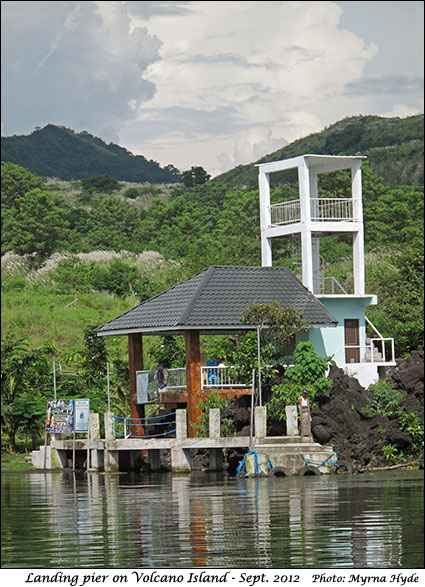
At the base of the pier can be seen rocks formed probably from the 1969 lava flow of Mt. Tabaro.
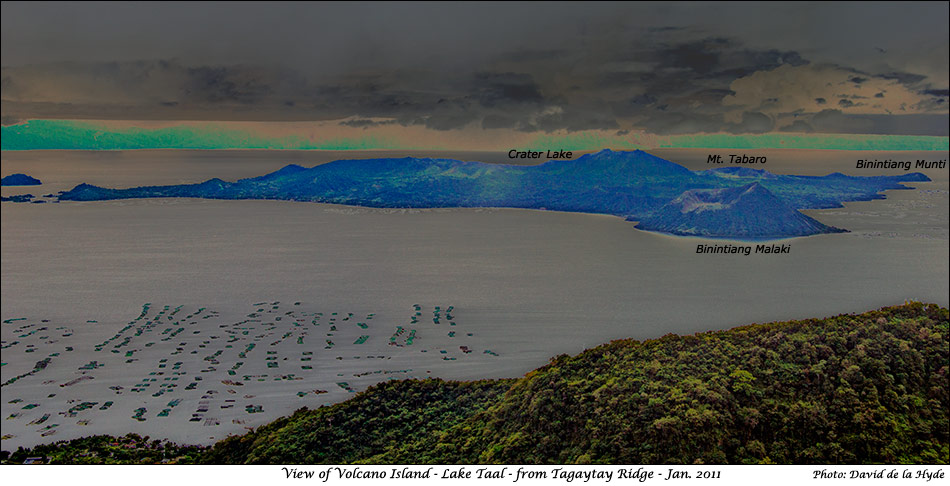
|
|
SAN NICOLAS - LAKE TAAL - VOLCANO ISLAND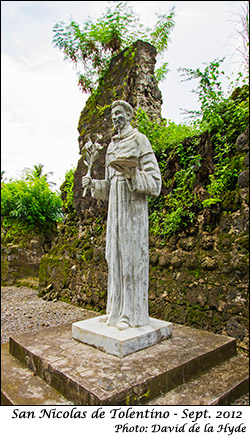
On our arrival from Manila at the Port of Batangas we were told that the early RORO ferry to Abra de Ilog had been cancelled. We made a decision to travel in the van to the shores of Lake Taal. After an almost random drive we came to the Municipality of San Nicolas where we had a late lunch. Sometime afterwards Myrna arranged a trip to Volcano Island even though it was rather late in the afternoon. I was not too keen on going to the crater because a few months ago I had fractured my right pelvis and broken my right forearm. Then a few months previous to that I had a quadruple coronary artery bypass operation. On arrival at the island I decided the least stressful method of ascent was to ride a horse. The only problem was that I had to have complete faith in the horse as my feet were too tightly enclosed by the stirrups. If the horse had fallen it would have been a serious situation for both of us. Taal Volcano is a complex volcano and historical eruptions are concentrated on Volcano Island. Lake Taal (formerly known as Bombón Lake) is a freshwater lake and lies within a 25–30 km caldera formed by very large eruptions between 500,000 and 100,000 years ago. |

At the base of the pier can be seen rocks formed probably from the 1969 lava flow of Mt. Tabaro. |
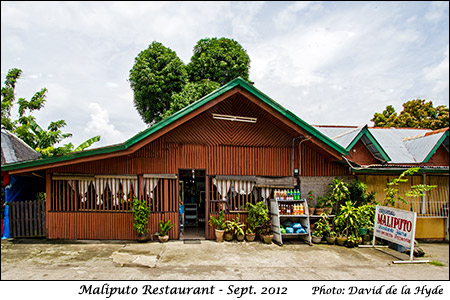
Near the town center of San Nicolas is Pansipit River that drains Lake Taal into Balayan Bay. It is the home of the giant trevally which is locally known as the Maliputo. The maliputo and Lake Taal are featured on the back of the 50 peso bill first issued in 2010. The tawilis - the only fresh water sardine in the world - lives in Lake Taal. |
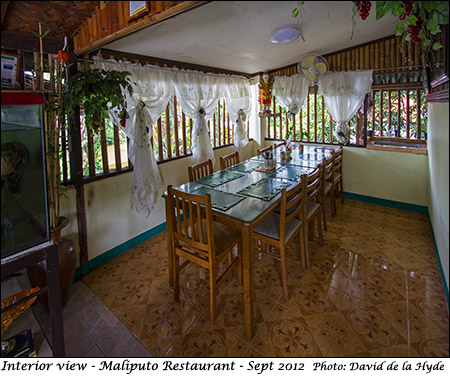
|
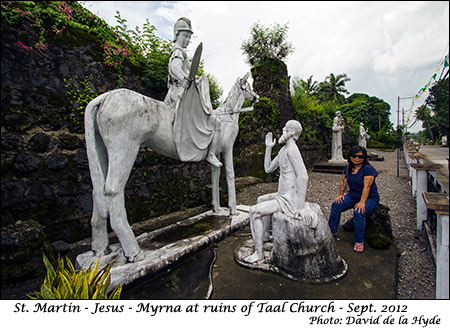
The first Taal Church was built in 1575 under the direction of the Augustinian Friar, Fr. Diego Espina. It was built with coral block stones. The church was destroyed when Taal Volcano erupted in 1754. San Nicolas, a small municipality in the province of Batangas, is sometimes called Lumang Taal. The town of Taal once was on this site but transferred after the 1754 eruption. San Nicolas de Tolentino is the patron saint of San Nicolas - (also patron of holy souls.) The southern half of Volcano Island is under the jurisdiction of San Nicolas, thus the town is one of the major take-off points to the crater lake. Talisay is responsible for the northern half. |
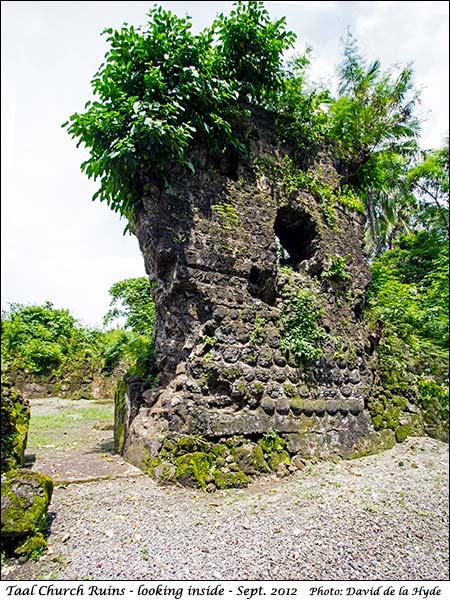
|
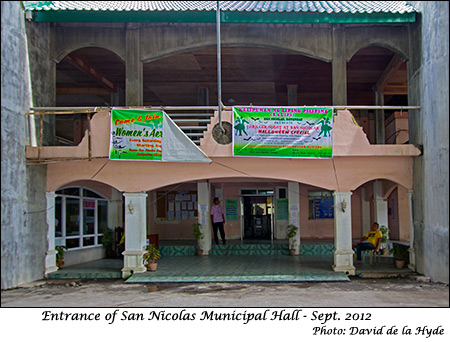
|
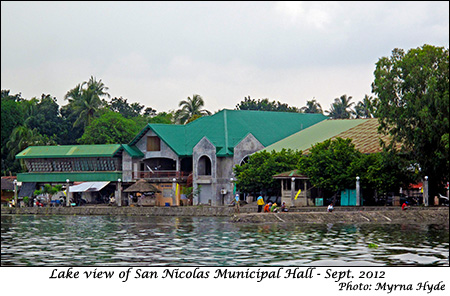
|
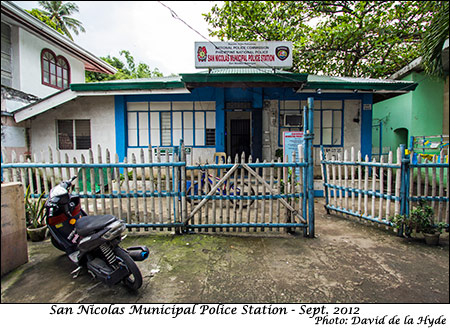
|
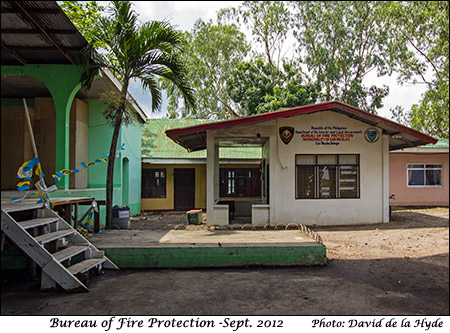
|
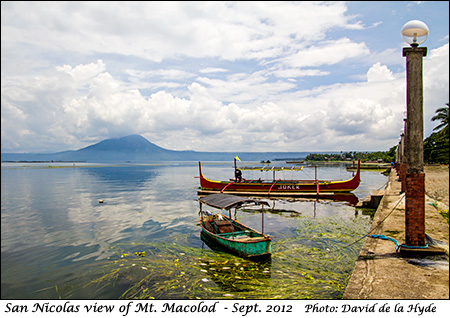
Mount Macolod is about 947 m tall, and its 700 meter high volcanic wall called The Rockies is thought to be part of the crater rim of the Taal caldera. The original Taal cone was formed more than 140,000 years ago. This cone was destroyed by major eruptions about 27,000 to 5,000 years ago. Ultimately a 25-by-30-kilometre wide depression formed now known as Taal Caldera. This depression was filled by water, thus forming a lake. Volcano Island was formed by numerous explosive hydrovolcanic eruptions in the middle of the lake after the collapse of the original cone. Mount Macolod is a volcanic cone and also the highest caldera rim of the former Taal Cone. |
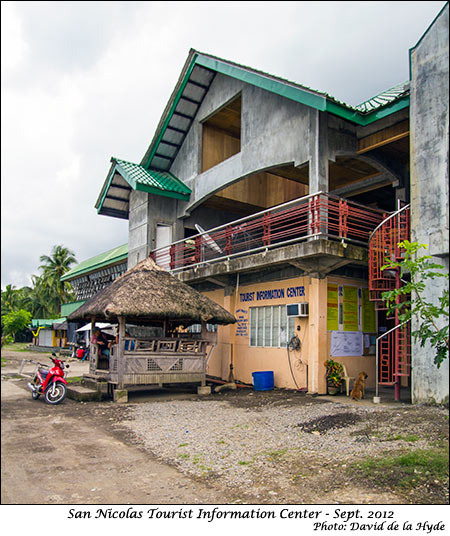
|
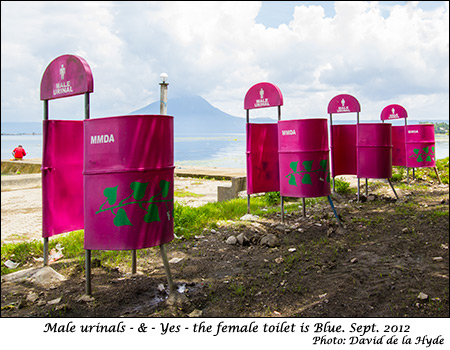
|
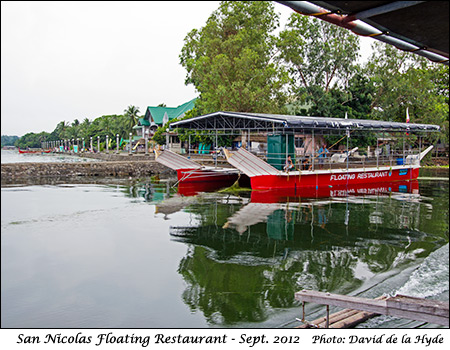
|
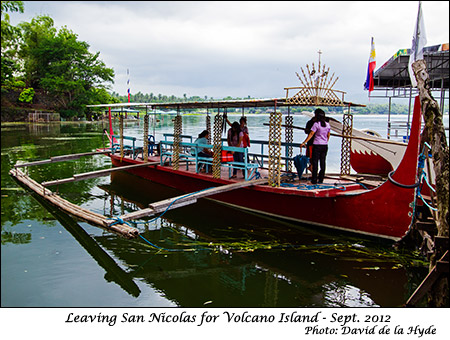
|
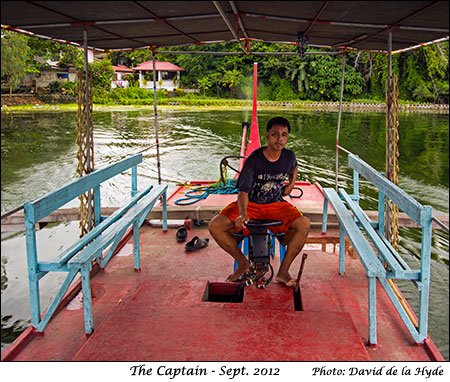
|
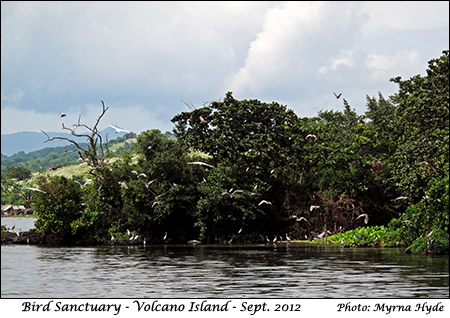
A small portion of the sanctuary. The birds - mainly Egrets. |
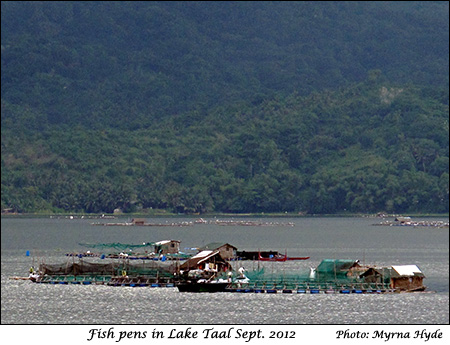
|
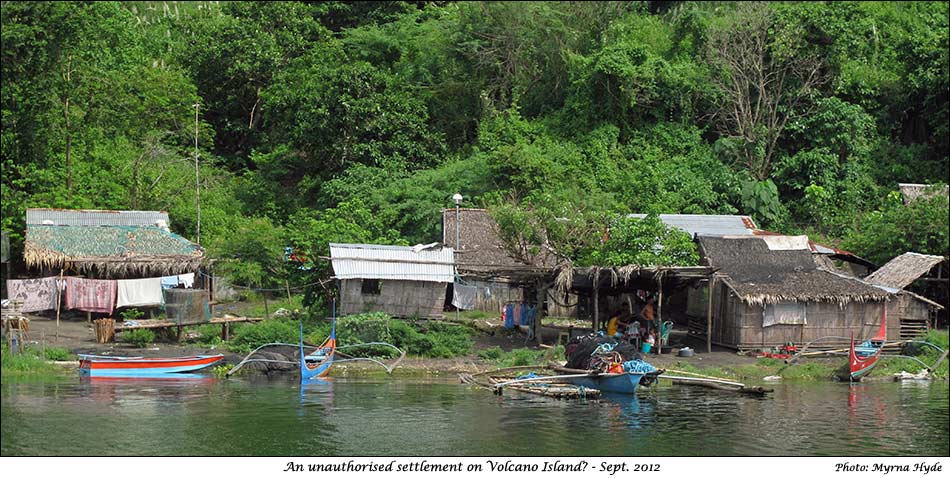
|
|
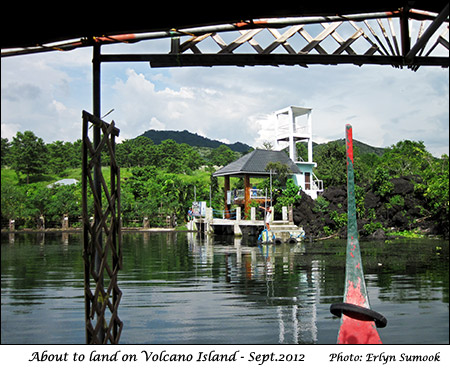
|
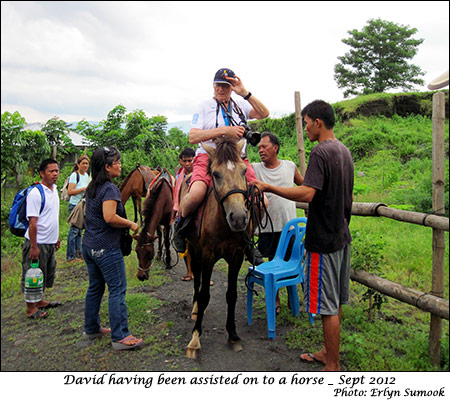
|
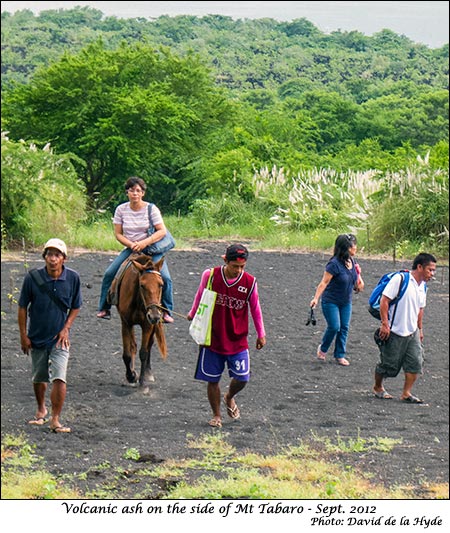
|
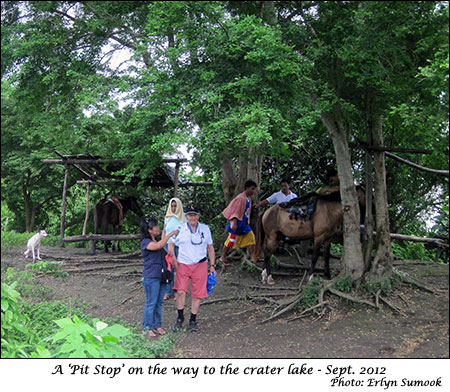
|
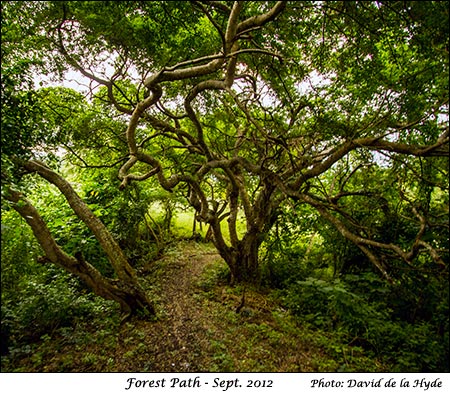
|
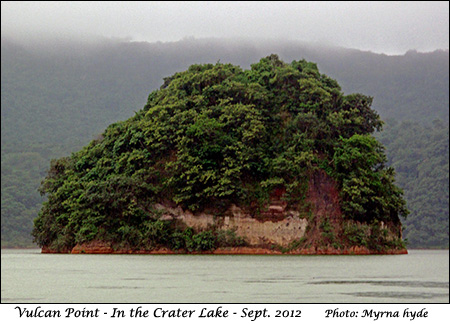
Vulcan Point - a large rock - is a remnant of the old crater floor and is surrounded by the 2km wide crater lake ( also known as yellow lake). Vulcan Point is said to be the world's second largest third order island. Vulcan point is in lake (Crater Lake) on an island within a lake (Volcano Island in Lake Taal) on an island (Lake Taal is on the Island of Luzon). |
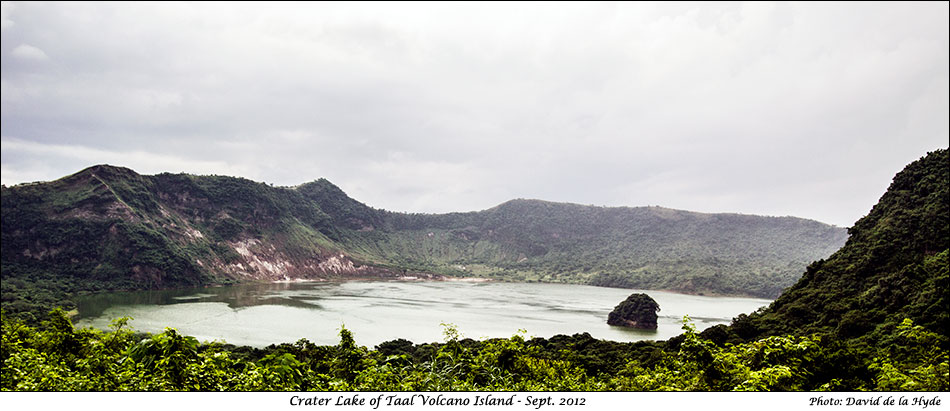
|
|